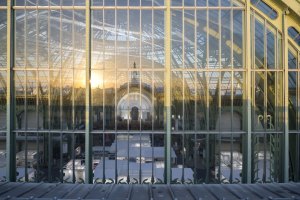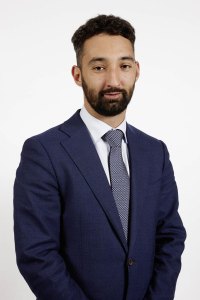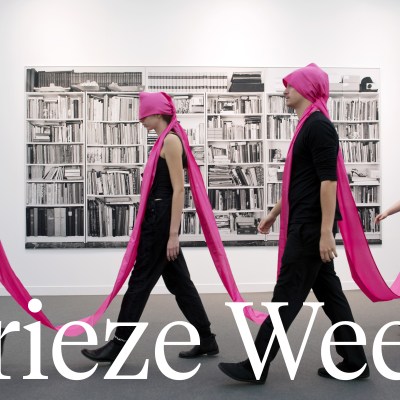Apollo’s regular round-up of art market headlines and comment. Visit Apollo Collector Services for expert advice on navigating the art market.
TEFAF takes on New York | TEFAF’s decision to launch in New York has been the talk of 2016 with the main question being: can this very European super-brand translate in the US? The inaugural TEFAF New York Fall (21–26 October) opens today at the Park Avenue Armory in collaboration with art advisors Artvest, and backed by the online marketplace Invaluable as the new marquee sponsor. New chief executive Patrick van Maris has been the driving force behind this change of gear, who is keen to take the TEFAF experience directly to American buyers.
Vesconte Maggiolo Planisphere (1531), the first map to show New York harbour. priced at $10m from Daniel Crouch Rare Books. Daniel Crouch Rare Books ($10m)

TEFAF New York Fall replaces the Haughton International Show, and next year Artvest’s Spring Masters fair will become TEFAF New York Spring (4–9 May 2017). Both fairs will be smaller than the Maastricht flagship, with around 90 exhibitors: the Spring edition will concentrate on modern and contemporary art and design, and Fall on everything that came before.
With the International Show tiring, and the Winter Antiques Show in January still rather Americana heavy, New York has been strangely lacking in top-end international fairs for pre-modern art and antiques. TEFAF, which is a byword for quality in the European art market, could well be the answer. Some Maastricht exhibitors have grumbled that it is spreading itself too thin across three fairs – but in the US the organisers and exhibitors know they have a lot to prove. TEFAF Maastricht sits pretty at the top of European fairs, but stasis is inevitable and the only real growth option is to take a risk by expanding. It might go wrong, but the odds are it won’t.
© FIAC 2016. Photo: Marc Domage

FIAC gets off to a strong start | Over in Paris, this year’s Foire International d’Art Contemporain (FIAC: 20–23 October) is a whopper. Not content with the Grand Palais, the 43-year-old fair has expanded across the Avenue Winston Churchill for the first time to the Petit Palais, and features 186 galleries in total, including over 40 newcomers. It previewed on Wednesday after a one-week lull in the contemporary calendar due to the earlier running of Frieze. The effects of the calendar shift – much discussed in the run-up to the fair – appear to be minimal and, according to Artnet, sales were ‘flowing’. The booths this year follow a general trend away from the brash and garish to more thoughtful presentations.
Young and fun: Paris Internationale | FIAC is now firmly part of the establishment, so fresh events, relevant and accessible to younger galleries and collectors alike, inevitably (and necessarily) spring up alongside. Enter the Paris Internationale art fair (20–23 October), which launched last year and has been hailed as a much-needed young, fun platform. Its new venue, the 19th-century former home of collector Calouste Gulbenkian, is a grand, old-Paris foil to the fresh works on show; there’s no stand-fitting for the 54 exhibitors, who hang their wares directly against the panelled interiors.
Les années de l’oiseau (1979), Shafic Abboud. Sold for $391,500 (AED1,437,588) at Christie’s Dubai

A decade of Christie’s Dubai | This is Christie’s 250th anniversary year, but the auction house is also marking 10 years in Dubai, where it still holds biannual sales. (Sotheby’s and Bonhams preview Indian and Middle Eastern highlights in Dubai, but hold their auctions in London.) On Tuesday (18 October) Christie’s staged its sale of Modern and Contemporary Middle Eastern art, a market whose slow, considered growth is in marked contrast to that of the city itself. At auction, tastes are quite conservative, favouring Iranian, Egyptian and Lebanese modernists rather than contemporary names. The $6,473,250 (AED 23,769,774) sale was led by an attractive abstract painting, Les années de l’oiseau (1979), by the Lebanese artist Shafic Abboud (1926–2004), which sold for $391,500 (AED 1,437,588) – a record for the artist. There was also keen interest for 19 works on paper from the Iranian school of Saqqakhaneh.
Victor Teodorescu joins Christie’s African & Oceanic Art department in France

Victor Teodorescu joins Christie’s African & Oceanic Art team | Post-war and contemporary art departments continue to reign supreme at auction houses, while the specialist departments of old have all but disappeared. But smaller departments that attract desirable crossover buyers sometimes receive a little love – such as the antiquities and tribal art departments at both Christie’s and Sotheby’s in the past two years. Christie’s has bolstered its team in Paris, home of the tribal art market, with the appointment of Victor Teodorescu, formerly of Lempertz’ Brussels office, to the African & Oceanic Art department. He will work on the 15 December sale of items from the estate of Madeleine Meunier (in collaboration with the Millon auction house), featuring the lauded African and Oceanic art collections of Aristide Courtois and Charles Ratton.
Visit Apollo Collector Services for the best information and advice about managing an art collection.



